A history of Fish Lane, part 1: St. Thomas' Church of England
By R. Hillier - Librarian, State Library of Queensland | 8 September 2016
Fish Lane in South Brisbane has recently been undergoing a rapid process of gentrification and revitalisation, with bars and restaurants popping up along it and and concerted effort being made to make it a fashionable southside destination. However, for decades this narrow alleyway which currently runs between Grey and Manning Streets, was a neglected back alley. Yet the largely forgotten history of this modest laneway is a story that stretches back to the very early days of the South Brisbane settlement.
In December 1849, the Church of England acquired 1 acre, 3 roods, 8 perches of land on the Southern side of the then ‘bridgeless’ Brisbane River for the purposes of building a church, school and parsonage. The vacant land stretched along a block facing Melbourne Street in the scattered settlement of South Brisbane, bordered by Grey Street on the south and Stanley Street on the north (which at that time ran right through the suburb past Montague Road to the river).

Excerpt from the map Plan of the city & environs of Brisbane, County of Stanley..., 1859 (showing the parcel of land on Melbourne Street obtained by the Church of England). John Oxley Library, State Library of Queensland.
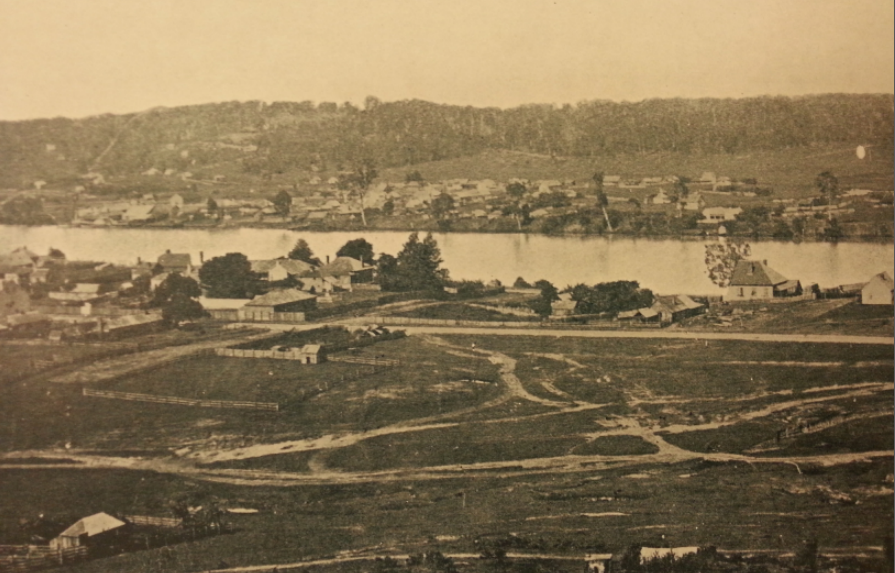
View across Roma and George Streets to the settlement of South Brisbane, 1860. From Brisbane past and present, published ca. 1902. John Oxley Library, State Library of Queensland.
Within a few years a small church, St Thomas’, was built on the site, set back some way from its Melbourne Street frontage. This, only the second episcopal church in Brisbane, was a modest building of ‘brick and rubble’, fenceless in a field from which cows and goats would occasionally stray inside. During the week a school was run in the church and over the following decades improvements to the building were gradually made and parishioners increased. Images of the church are very difficult to come by, usually only seen in the background of broader views.
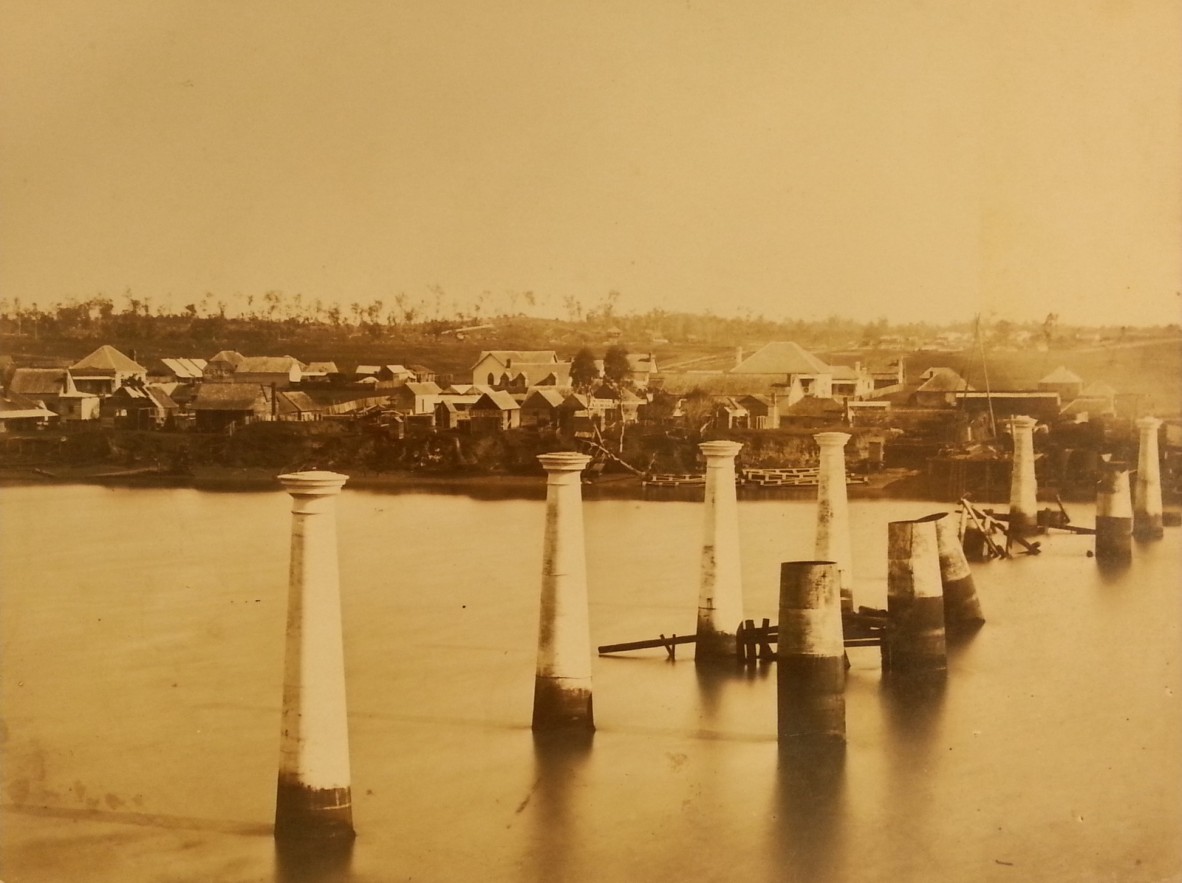
The first permanent Victoria Bridge under construction, ca. 1868. From Accession 30651: Max Klose photographs. John Oxley Library, State Library of Queensland.
June 1874 saw the opening of the first ‘permanent’ bridge across the Brisbane River. This commanding new iron structure was built higher than the previous wooden crossing of the 1860s and this saw the surrounding approach roads raised up to meet it. St. Thomas’ Church suddenly found itself in a hole, languishing well beneath road level.
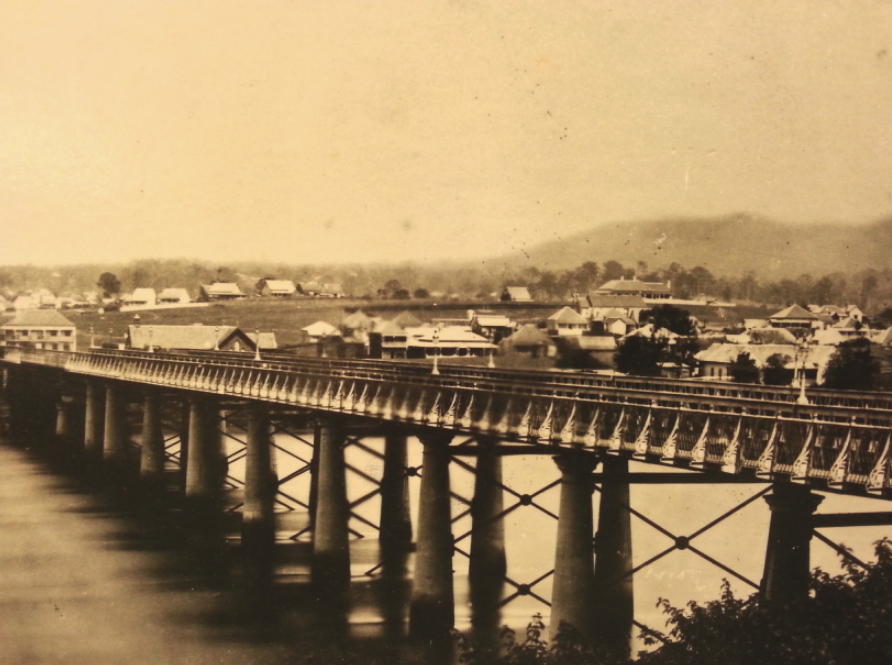
View from Queen's Wharf Road, looking across the Victoria Bridge towards South Brisbane, ca. 1878. (St. Thomas' Church is described as being the roof visible alongside the bridge on the far bank). John Oxley Library, State Library of Queensland. Neg 17646.
Despite the new bridge, progress on the south side of the river wasn't immediate - as late as early 1881 the church remained the only building on it's large grassy block. However, within a decade of the bridge's construction, South Brisbane was booming and a busy hub soon rose up around the sunken church. Due to the development and the raised roads around them, St. Thomas' parishioners began accessing the church from the back by heading up the short ‘nameless’ laneway that was developing behind the church. This is the first real indication of what would eventually become known as Fish Lane.

Excerpt from Queensland Post Office Directory, 1878/1879 (showing St. Thomas' Church standing alone on the Melbourne Street stretch between Grey Street and Stanley Street). John Oxley Library, State Library of Queensland.
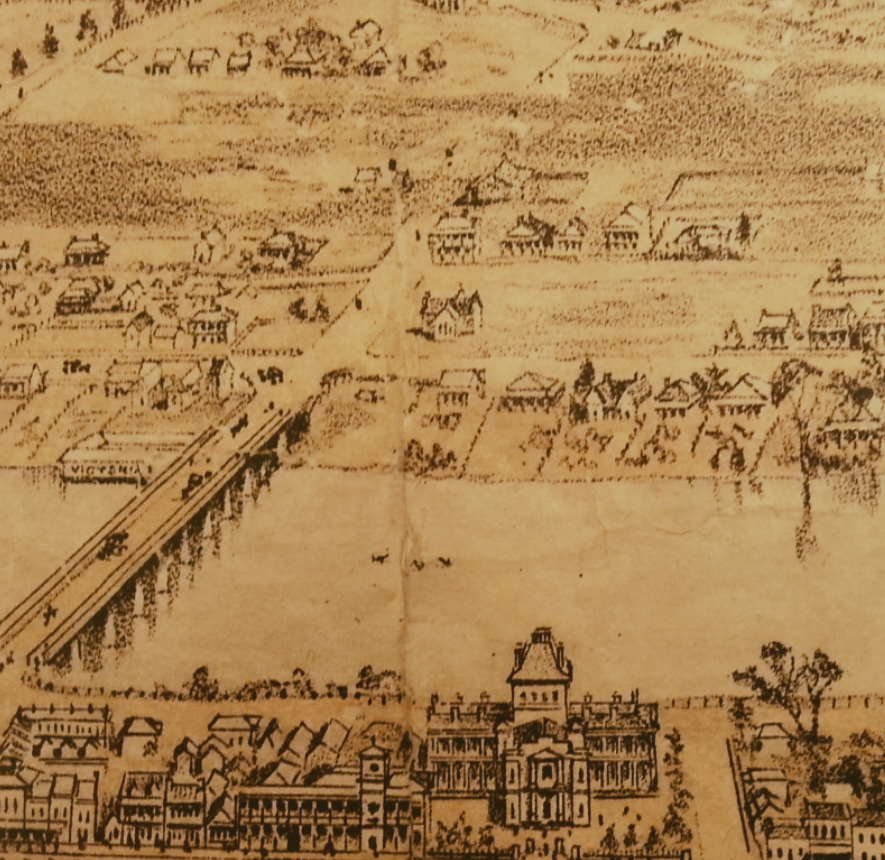
Excerpt from the map Brisbane, July 1881 (a supplement to the Illustrated Sydney News) (St. Thomas' Church can be seen standing alone alongside Melbourne Street on the far side of the bridge). John Oxley Library, State Library of Queensland.
By this stage, the parishioners of St. Thomas’ Church had already long had their eyes on more elevated ground. In 1878, the Church of England secured land high up on nearby Vulture Street and work soon began on a much more ambitious church.
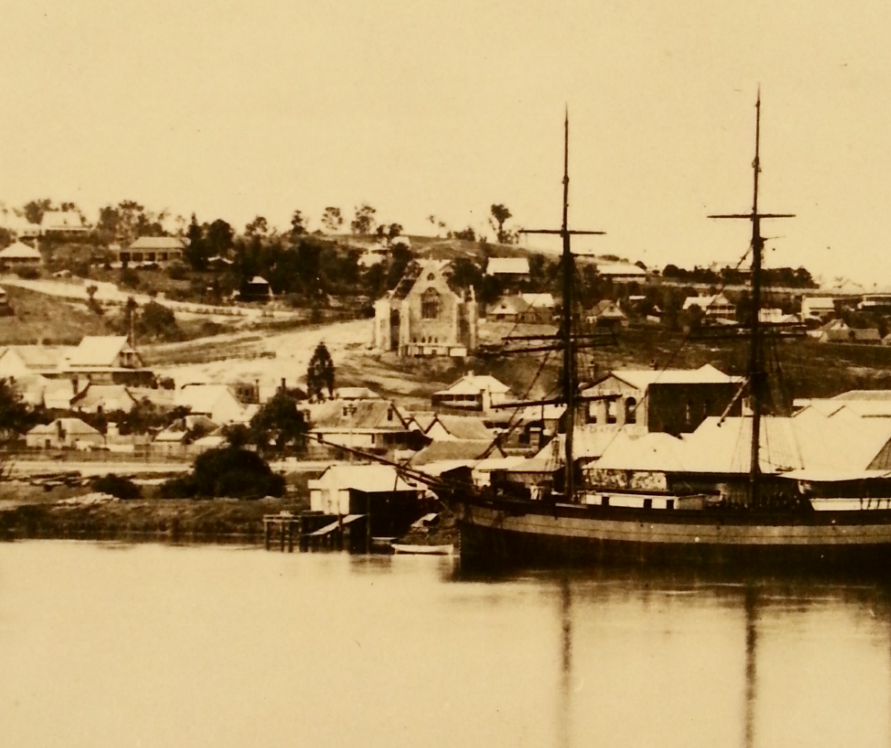
St. Andrews' Church of England under construction, Vulture Street, South Brisbane, 1881. (The church can be seen at the centre of the photograph). John Oxley Library, State Library of Queensland. Neg 61754.
Finally, in 1883, St. Andrews' was completed and parishioners then left behind what they referred to as ‘the bridge lands’ for their lofty new place of worship. St. Andrew's stands on the hillside above South Brisbane to this day. The St. Thomas’ Church building was subsequently leased out to business.

St. Andrews' Church of England, 1947. John Oxley Library, State Library of Queensland. Neg 189987.
Curiously enough, many years later, in 1931, another St. Thomas' Church of England was built on this very same block, this time precisely on the corner of Melbourne and Grey Streets, and served the South Brisbane parishioners up until the 1970s. By the time this church was built, Fish Lane was well established running along behind the block. Finally, yet another St. Thomas' Church of England was built in 1962 a few blocks away on Manning Street and still stands today, albeit no longer as a place of worship.
R. Hillier - Original Materials Librarian, State Library of Queensland
Comments
Your email address will not be published.
We welcome relevant, respectful comments.